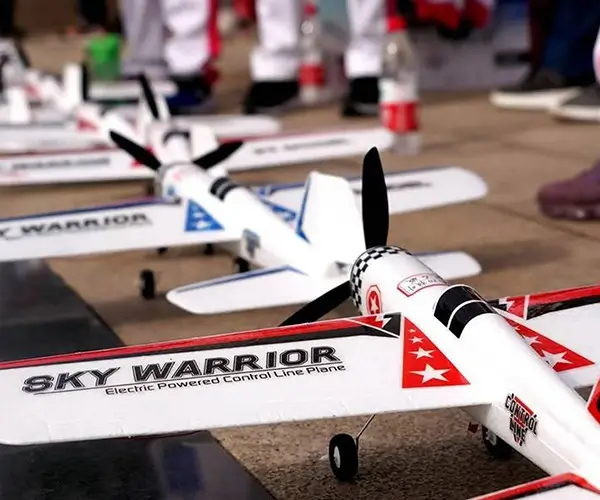Introduction: The Power and Possibilities of Servo Motors with Arduino
In the grand landscape of electronics and robotics, servo motors stand out as indispensable elements for precise movement and control. Whether you're designing a robotic arm, a remote-controlled vehicle, or a sensor-based automation system, servo motors provide the agility and accuracy needed to turn ideas into tangible reality.

At the heart of many hobbyist and professional projects alike is Arduino—the open-source microcontroller platform that transforms simple electronics into powerful, automated systems. Combining Arduino with servo motors unlocks a world of endless possibilities, allowing enthusiasts and developers to build machines that can emulate human-like movement with remarkable precision.
But what exactly makes servo motors so special? How do you harness their potential with Arduino? And what are some practical applications that inspire you to explore further? Let's start by understanding what servo motors are and why they are a favored choice for precise control.
What Is a Servo Motor?
A servo motor is a type of rotary actuator that allows for precise control of angular position, velocity, and acceleration. Unlike standard motors, which run continuously and require additional mechanics for positional accuracy, servos incorporate a feedback mechanism inside their control systems. This feedback loop ensures that the motor shaft reaches and maintains the desired position accurately.
Typically, servo motors are small to medium-sized devices characterized by their torque, speed, and controllability. They include a DC motor, a gear train, a position sensor (usually a potentiometer), and a control circuit. This integrated design makes servo motors ideal for fine positional control in robotics, automation systems, and many DIY projects.
Some common types of servo motors include:
Standard Servos: Used for general purposes; offers 0-180 degrees rotation. Continuous Rotation Servos: Capable of full 360-degree rotation, suitable for drivetrain applications. Digital Servos: Provide better precision, holding torque, and responsiveness.
Why Use Servo Motors with Arduino?
Arduino's popularity stems from its simplicity and flexibility, making it a perfect partner for controlling servo motors. Here's why:
Ease of Use: Arduino libraries make it straightforward to control servos without intricate understanding of their internal mechanics. Cost-Effective: Both Arduino boards and servos are affordable, enabling hobbyists to experiment and learn without a big investment. Precise Control: Arduino can generate PWM (Pulse Width Modulation) signals that correspond to specific servo positions, allowing for smooth movements. Versatility: Servo motors can be used in droves — from basic hobby projects to complex robotic systems.
How Does Servo Motor Control Work?
Controlling a servo with Arduino involves generating a PWM signal—a series of electrical pulses of specific lengths—and sending these signals to the servo's control wire. The length of the pulse (the pulse width) determines the servo's position within its rotation range.
For standard hobby servos:
A 1 ms pulse typically corresponds to the 0-degree position. A 2 ms pulse typically corresponds to the 180-degree (or maximum) position. Pulses in between those values correspond to intermediate positions.
Arduino has a dedicated library called Servo, designed specifically to simplify this process. This library abstracts the complexity of generating accurate PWM signals, making it easy to write commands like servo.write(90); to position your servo at 90 degrees.
Essential Hardware Components
To start controlling servo motors with Arduino, you'll need a few essential components:
Arduino Board: Uno, Nano, Mega, etc. Servo Motor: Standard or digital, depending on your project. Power Supply: Servos can draw significant current. Often, an external power supply is recommended rather than powering directly from the Arduino. Connecting Wires: To connect the servo to the Arduino. Breadboard (optional): For organizing connections and adding sensors or switches.
Connecting the Hardware
A typical servo motor has three wires:
Signal (Control): Usually white, yellow, or orange. Power (+V): Red. Ground (GND): Black or brown.
Here’s a simple connection setup:
Connect the servo's ground wire to Arduino GND. Connect the servo's power wire to external power (typically 5V), ensuring the power supply can provide enough current. Connect the signal wire to one of the Arduino's PWM pins, such as pin 9. Make sure to connect the grounds of the Arduino and external power supply together to have a common reference.
First Step: Blinking an LED, Then Moving a Servo
Before jumping into servo control, ensure your Arduino setup works correctly. The classic “blink” program helps test the board’s operation. Once verified, upload the basic servo control sketch.
Here's a simple example using the Servo library:
#include Servo myServo; void setup() { myServo.attach(9); // Attach servo to pin 9 Serial.begin(9600); } void loop() { for (int pos = 0; pos <= 180; pos++) { // Move from 0 to 180 degrees myServo.write(pos); delay(15); // Wait 15ms for the servo to reach position } delay(1000); // Wait 1 second for (int pos = 180; pos >= 0; pos--) { // Move back from 180 to 0 degrees myServo.write(pos); delay(15); } delay(1000); }
Testing and Calibration
Once your setup is complete, upload the code, and watch your servo move smoothly back and forth. Remember, some servos may have slight calibration differences, so you might need to adjust your servo’s range or add offsets to get precise positioning.
Stay tuned for Part 2, where we will explore advanced control techniques, sensors integration, real-world project ideas, troubleshooting tips, and ways to elevate your servo motor projects with Arduino.
Kpower has delivered professional drive system solutions to over 500 enterprise clients globally with products covering various fields such as Smart Home Systems, Automatic Electronics, Robotics, Precision Agriculture, Drones, and Industrial Automation.




































